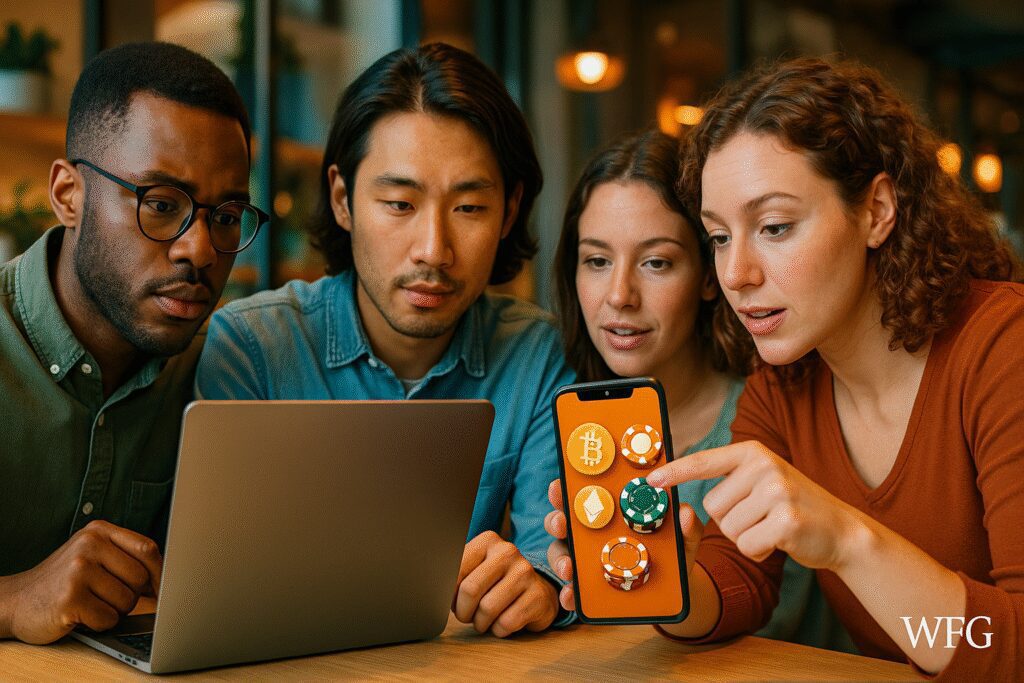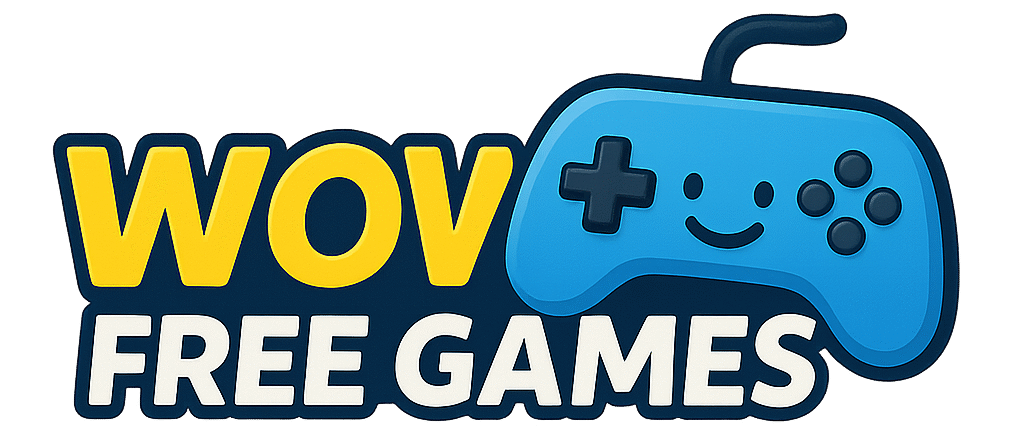Legit crypto casino platforms represent a revolutionary shift in online gambling, but navigating this new landscape can feel overwhelming for newcomers. Unlike traditional online casinos that operate with familiar regulatory frameworks, cryptocurrency gambling introduces unique challenges and opportunities that require a different approach to evaluating legitimacy.
The crypto gambling industry has exploded in recent years, with hundreds of new platforms launching monthly. However, this rapid growth has also attracted bad actors looking to exploit unsuspecting users. Understanding what separates legitimate operations from sophisticated scams could mean the difference between enjoying secure gaming entertainment and losing your hard-earned cryptocurrency to fraudsters.
This comprehensive guide will equip you with the knowledge and tools needed to confidently identify trustworthy crypto casinos, avoid common pitfalls, and make informed decisions about where to place your digital assets.
What Makes a Crypto Casino Legitimate?
Licensed and Regulated Operations
The foundation of any legit crypto casino lies in proper licensing and regulatory compliance. Legitimate platforms obtain gaming licenses from recognized jurisdictions such as Curacao, Malta, or the UK Gambling Commission. These licenses require operators to meet strict standards for financial security, fair gaming practices, and player protection.
When evaluating a crypto casino’s licensing status, look for license numbers prominently displayed on their website, typically in the footer section. Legitimate operators proudly showcase their regulatory compliance because it builds trust with potential users. You should be able to verify license validity by visiting the regulator’s official website and searching their database.
Some crypto casinos operate under newer regulatory frameworks specifically designed for digital asset gambling. Countries like Estonia and Gibraltar have developed comprehensive licensing systems that address the unique aspects of cryptocurrency gaming while maintaining high standards for player protection.
Transparent Ownership and Company Information
Legitimate crypto casinos maintain transparency about their ownership structure, management team, and corporate registration. This information should be easily accessible on their website, often found in “About Us” or “Company Information” sections. Reputable platforms provide detailed company profiles, including registration numbers, physical addresses, and executive team backgrounds.
Be wary of platforms that hide behind anonymous ownership or provide only vague contact information. Legitimate businesses understand that transparency builds trust, especially in an industry where regulatory scrutiny continues to evolve. Look for companies that provide multiple contact methods, including phone numbers, email addresses, and live chat support.
Many established crypto casinos also maintain active social media presence and engage with their community through official channels. This ongoing communication demonstrates their commitment to building long-term relationships rather than operating hit-and-run schemes.
Provably Fair Gaming Technology
One of the most significant advantages of legitimate crypto casinos is their implementation of provably fair technology. This cryptographic system allows players to independently verify that game outcomes are genuinely random and not manipulated by the house.
Provably fair technology works by generating a cryptographic hash before each game round, which players can later verify using publicly available algorithms. This transparency level is impossible to achieve with traditional online casinos, making it a crucial legitimacy indicator for crypto platforms.
Legitimate operators provide detailed explanations of their provably fair systems, including step-by-step instructions for verification. They also maintain public verification tools or partner with third-party services that allow players to check game fairness independently.
Essential Safety Features Every Legit Crypto Casino Must Have
SSL Encryption and Security Protocols
Security infrastructure forms the backbone of any trustworthy crypto casino operation. Legitimate platforms implement military-grade SSL encryption to protect user data and financial transactions. Look for the padlock symbol in your browser’s address bar and verify that the website URL begins with “https” rather than “http.”
Advanced security features include two-factor authentication (2FA), IP whitelisting, and withdrawal confirmation emails. These measures protect user accounts from unauthorized access and provide additional layers of security for cryptocurrency transactions.
Legitimate crypto casinos also implement robust anti-fraud systems that monitor for suspicious activity patterns. These systems help protect both the platform and its users from various forms of cybercrime while maintaining smooth gaming experiences for legitimate players.
Segregated Wallet Systems
Professional crypto casino operations maintain strict separation between operational funds and player deposits through segregated wallet systems. This practice ensures that player funds remain protected even if the casino faces financial difficulties or operational challenges.

Legitimate platforms often provide transparency about their wallet management practices, sometimes publishing wallet addresses for independent verification. Some casinos maintain cold storage systems for the majority of player funds, keeping only necessary amounts in hot wallets for day-to-day operations.
Cash Earning Game Apps: How Crypto Gamers Turn Play Into Profit
Multi-signature wallet implementations add another layer of security by requiring multiple authorization keys for fund movements. This technology prevents single points of failure and demonstrates the platform’s commitment to protecting user assets.
Regular Third-Party Audits
Reputable crypto casinos undergo regular audits by independent security firms and gaming authorities. These audits evaluate everything from random number generation algorithms to financial controls and security protocols. Look for recent audit reports published on the casino’s website or through recognized auditing firms.
Technical audits should cover smart contract security, wallet infrastructure, and game fairness verification. Financial audits verify that the platform maintains adequate reserves to cover player balances and operates with sound fiscal management practices.
Some platforms also undergo compliance audits to ensure adherence to anti-money laundering (AML) and know-your-customer (KYC) regulations. While these requirements may seem burdensome, they actually indicate a platform’s commitment to operating within legal frameworks.
Red Flags That Scream “Avoid This Crypto Casino”
Anonymous Ownership and No Contact Information
Legitimate businesses provide clear contact information and maintain transparency about their operations. Crypto casinos that hide behind anonymous domain registrations, provide only generic email addresses, or lack physical business addresses should raise immediate red flags.
Scam operations often use temporary communication methods that can be easily abandoned when authorities investigate or users begin reporting problems. If you cannot find legitimate contact information or the provided details seem suspicious, consider this a major warning sign.
Professional crypto casinos maintain customer service departments with multiple contact options and reasonable response times. They also provide clear escalation procedures for dispute resolution and maintain relationships with industry organizations.
Unrealistic Bonuses and Promotional Claims
While attractive bonuses can indicate competitive platforms, unrealistic promotional offers often signal illegitimate operations. Scam casinos frequently advertise impossible-to-achieve bonuses with hidden terms designed to prevent withdrawals.
Legitimate operators structure their promotions with reasonable wagering requirements and clear terms and conditions. They understand that sustainable business models require balanced promotional strategies rather than loss-leader offers that cannot be fulfilled.
Be particularly cautious of platforms advertising guaranteed wins, risk-free gambling, or promotional offers that seem too good to be true. Professional operators focus on long-term player relationships rather than short-term acquisition tactics.
Poor User Reviews and Community Complaints
Community feedback provides invaluable insights into crypto casino operations. Platforms with consistently negative reviews, unresolved withdrawal complaints, or patterns of user dissatisfaction should be avoided regardless of their apparent legitimacy indicators.
Research multiple review sources including dedicated gambling forums, social media platforms, and independent review websites. Look for detailed user experiences rather than generic positive reviews that might be artificially generated.
Pay particular attention to complaints about withdrawal delays, account closures, or disputed winnings. While individual complaints might represent isolated incidents, patterns of similar problems often indicate systemic operational issues.
How to Research a Crypto Casino’s Legitimacy
Checking Licensing Bodies and Regulatory Status
Verify licensing claims by directly contacting regulatory authorities or using their official verification systems. Many licensing jurisdictions maintain online databases where you can confirm operator status and check for any enforcement actions or penalties.
Research the reputation of the licensing jurisdiction itself. Some countries have developed strong regulatory frameworks for online gambling, while others may offer licenses with minimal oversight requirements. Understanding these differences helps evaluate the significance of various licensing claims.
Consider whether the platform’s operations align with their claimed regulatory status. Licensed operators typically implement KYC procedures, maintain detailed transaction records, and comply with responsible gambling requirements.
Verifying Game Provider Partnerships
Legitimate crypto casinos partner with established game providers who have their own reputations to protect. Research the casino’s game portfolio and verify partnerships with recognized providers such as Evolution Gaming, NetEnt, or Pragmatic Play.
Established game providers typically require operators to meet specific standards before approving partnerships. These requirements often include licensing verification, financial stability assessments, and technical integration testing.
Be cautious of platforms that claim partnerships with major providers but cannot demonstrate these relationships through official provider websites or direct confirmation from the game companies themselves.
Reading Community Forums and Review Sites
Engage with gambling community forums where experienced players share insights about various crypto casino operations. These communities often provide early warnings about problematic platforms and celebrate genuinely excellent operators.
Look for detailed discussions about user experiences rather than simple ratings or recommendations. Experienced community members often provide nuanced analyses of platform strengths and weaknesses based on extensive personal experience.
Consider the longevity and activity levels of community discussions. Platforms that have maintained positive community engagement over extended periods demonstrate consistency and reliability that newer operations cannot yet claim.
The Difference Between Traditional and Crypto Casino Legitimacy
Why Crypto Casinos Face Unique Challenges
Cryptocurrency gambling operates in a rapidly evolving regulatory environment where traditional oversight mechanisms may not fully apply. This creates unique challenges for both operators and players in establishing and verifying legitimacy.
The pseudonymous nature of cryptocurrency transactions can complicate traditional due diligence processes while simultaneously offering enhanced privacy protection for users. Balancing these competing interests requires sophisticated operational approaches that legitimate platforms must master.
Technical complexity adds another layer of verification requirements. Players must evaluate not only traditional business legitimacy indicators but also technical implementations such as smart contract security and blockchain integration quality.
Understanding Decentralized vs. Centralized Platforms
Decentralized crypto casinos operate through smart contracts on blockchain networks, theoretically eliminating the need for traditional trust relationships. However, these platforms present their own legitimacy evaluation challenges related to smart contract security and governance structures.
Centralized crypto casinos maintain more traditional operational structures while incorporating cryptocurrency payment methods. These platforms typically provide clearer regulatory compliance pathways but require traditional due diligence approaches.
Understanding the operational model helps determine appropriate evaluation criteria. Decentralized platforms require technical analysis capabilities, while centralized operations can be evaluated using modified versions of traditional casino assessment methods.
Your Step-by-Step Legitimacy Checklist
Before You Sign Up
Verify licensing status through official regulatory channels and confirm that provided license information matches official records. Research the platform’s ownership structure and ensure that contact information leads to legitimate business operations.
Check community feedback across multiple sources and look for patterns in user experiences. Verify game provider partnerships through official channels and confirm that claimed relationships are legitimate and current.
Test customer service responsiveness by asking general questions about platform operations. Legitimate operators typically provide helpful, knowledgeable responses while maintaining professional communication standards.
Before You Deposit
Ensure the platform implements appropriate security measures including SSL encryption, 2FA options, and secure wallet infrastructure. Review terms and conditions thoroughly, paying particular attention to withdrawal requirements and dispute resolution procedures.
Verify that the platform maintains provably fair gaming systems and provides tools for independent verification. Confirm that withdrawal processes are clearly documented with reasonable timeframes and fee structures.
Start with small test deposits to evaluate platform functionality and withdrawal processes before committing significant funds. This approach allows you to verify operational quality without substantial risk exposure.
Before You Start Playing
Familiarize yourself with responsible gambling tools and account management features. Set clear limits for your gambling activities and ensure that the platform provides adequate tools for maintaining these boundaries.
Understand the platform’s bonus structures and wagering requirements to avoid unexpected restrictions on withdrawals. Review game rules and payout structures to ensure they align with your entertainment preferences and risk tolerance.
Turn Your Gaming Skills into Cash: The Ultimate Guide to Playing Games for Real Money in 2025
Establish clear communication channels with customer service and test these systems before issues arise. Knowing how to effectively communicate with platform operators can prevent minor problems from becoming major disputes.
Frequently Asked Questions
How can I verify if a crypto casino is actually licensed?
Visit the official website of the claimed licensing authority and use their verification tools to confirm the license status. Most legitimate regulators provide online databases where you can search for licensed operators using company names or license numbers. Never rely solely on license certificates displayed on the casino’s website, as these can be easily falsified.
What’s the difference between provably fair and traditional casino games?
Provably fair games use cryptographic algorithms that allow players to independently verify that game outcomes are random and unmanipulated. Traditional online casino games require players to trust that the operator isn’t cheating, while provably fair technology provides mathematical proof of fairness. This transparency represents one of the key advantages of legitimate crypto casino operations.
Are crypto casinos legal in my jurisdiction?
Cryptocurrency gambling legality varies significantly by jurisdiction and continues to evolve as governments develop new regulatory frameworks. Research your local laws regarding both online gambling and cryptocurrency usage, as both elements affect the legal status of crypto casino participation. Some jurisdictions explicitly permit crypto gambling, while others prohibit it or exist in regulatory gray areas.
How long should crypto casino withdrawals take?
Legitimate crypto casinos typically process withdrawals within 24-48 hours, though processing times can vary based on blockchain network conditions and internal security procedures. Instant withdrawals are possible but often reserved for VIP players or smaller amounts. Be suspicious of platforms that consistently delay withdrawals beyond reasonable timeframes or impose excessive verification requirements.
What should I do if I think I’m being scammed by a crypto casino?
Document all interactions with the platform including screenshots, transaction records, and communication history. Report the incident to relevant regulatory authorities and consider filing complaints with consumer protection agencies. Share your experience with community forums to warn other potential victims, but focus on factual information rather than emotional responses.
Can I trust crypto casinos that don’t require KYC verification?
No-KYC crypto casinos operate in regulatory gray areas and may face limitations in terms of licensing and player protection measures. While some legitimate platforms offer limited services without verification, complete absence of any identity verification often indicates either unlicensed operations or platforms that cannot maintain traditional banking relationships. Exercise extreme caution with anonymous gambling platforms.




Pingback: mexican game developers
Pingback: Game Industry & Business